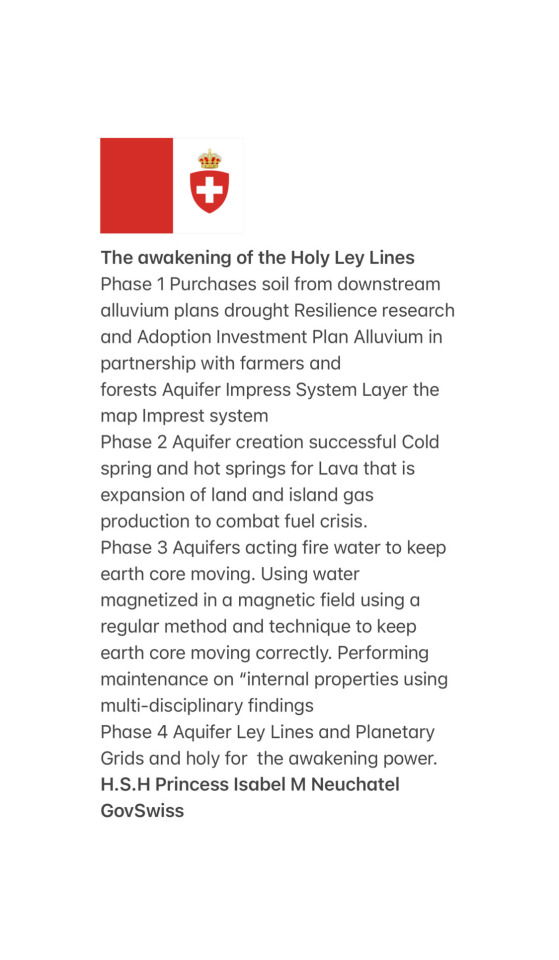#aquifer
Text
youtube
Here’s why approx 69% of Texas cotton farmers are expected to abandon their crops this year
This video was made with support from Climate Power.
#Earth #Environment #ClimateCrisis #NowThis
#now this earth#now this#solarpunk#USA#texas#cotton#farming#agriculture#Climate Power#climate crisis#climate change#climate chaos#global warming#global heating#rain#drought#water crisis#chemicals#fertilizer#aquifer#Ogallala Aquifer#irrigation#rain water#Youtube
23 notes
·
View notes
Text

Shades of beautiful blue water at Gilchrist Blue Springs
5 notes
·
View notes
Text
"L'Aquifer ci darà comunque un senso di tranquillità ed equilibrio e, se volete mantenerlo anche nel vostro outfit, vi basterà abbinarlo ad altri colori freddi come il blu pallido, il verde menta e il grigio chiaro"
#aquifer#pantone#color#fashion design#fashion blog#blog#blogger#beauty blogger#fashion#moda#tabatha moda design#fashion moodboard#blogs#blogging#blog post#wordpress#italian blog#adobe#fashion blogger#dior girl#bella hadid#31 gennaio#tumblr blog#fashion tumblr#tumblog#art on tumblr#artists on tumblr#aesthetic#dreamy#a e s t h e t i c
0 notes
Text
Take part in clean of your local rivers, lakes, wetlands or beaches.

ACTION - Clean up.
#world water day#WorldToDoList#clean up#Take action#Rivers#Lakes#wetlands#Beach#aquifer#Purify#solid waste#plastic waste#garbages
0 notes
Text
The awakening of the Holy Ley Lines
Phase 1 Purchases soil from downstream alluvium plans drought Resilience research and Adoption Investment Plan Alluvium in partnership with farmers and forests Aquifer Impress System Layer the map Imprest system
Phase 2 Aquifer creation successful Cold spring and hot springs for Lava that is expansion of land and island gas production to combat fuel crisis.
Phase 3 Aquifers acting fire water to keep earth core moving. Using water magnetized in a magnetic field using a regular method and technique to keep earth core moving correctly. Performing maintenance on “internal properties using multi-disciplinary findings
Phase 4 Aquifer Ley Lines and Planetary Grids and holy for the awakening power.
H.S.H Princess Isabel M Neuchatel
GovSwiss

0 notes
Text
*watches a family guy episode* i need a well into the perth aquifer
1 note
·
View note
Text
Scientists have developed a new solar-powered system to convert saltwater into fresh drinking water which they say could help reduce dangerous the risk of waterborne diseases like cholera.
Via tests in rural communities, they showed that the process is more than 20% cheaper than traditional methods and can be deployed in rural locations around the globe.
Building on existing processes that convert saline groundwater to freshwater, the researchers from King’s College London, in collaboration with MIT and the Helmholtz Institute for Renewable Energy Systems, created a new system that produced consistent levels of water using solar power, and reported it in a paper published recently in Nature Water.
It works through a process called electrodialysis which separates the salt using a set of specialized membranes that channel salt ions into a stream of brine, leaving the water fresh and drinkable. By flexibly adjusting the voltage and the rate at which salt water flowed through the system, the researchers developed a system that adjusts to variable sunshine while not compromising on the amount of fresh drinking water produced.
Using data first gathered in the village of Chelleru near Hyderabad in India, and then recreating these conditions of the village in New Mexico, the team successfully converted up to 10 cubic meters, or several bathtubs worth of fresh drinking water. This was enough for 3,000 people a day with the process continuing to run regardless of variable solar power caused by cloud coverage and rain.
[Note: Not sure what metric they're using to calculate daily water needs here. Presumably this is drinking water only.]
Dr. Wei He from the Department of Engineering at King’s College London believes the new technology could bring massive benefits to rural communities, not only increasing the supply of drinking water but also bringing health benefits.
“By offering a cheap, eco-friendly alternative that can be operated off the grid, our technology enables communities to tap into alternative water sources (such as deep aquifers or saline water) to address water scarcity and contamination in traditional water supplies,” said He.
“This technology can expand water sources available to communities beyond traditional ones and by providing water from uncontaminated saline sources, may help combat water scarcity or unexpected emergencies when conventional water supplies are disrupted, for example like the recent cholera outbreaks in Zambia.”
In the global rural population, 1.6 billion people face water scarcity, many of whom are reliant on stressed reserves of groundwater lying beneath the Earth’s surface.
However, worldwide 56% of groundwater is saline and unsuitable for consumption. This issue is particularly prevalent in India, where 60% of the land harbors undrinkable saline water. Consequently, there is a pressing need for efficient desalination methods to create fresh drinking water cheaply, and at scale.
Traditional desalination technology has relied either on costly batteries in off-grid systems or a grid system to supply the energy necessary to remove salt from the water. In developing countries’ rural areas, however, grid infrastructure can be unreliable and is largely reliant on fossil fuels...
“By removing the need for a grid system entirely and cutting reliance on battery tech by 92%, our system can provide reliable access to safe drinking water, entirely emission-free, onsite, and at a discount of roughly 22% to the people who need it compared to traditional methods,” He said.
The system also has the potential to be used outside of developing areas, particularly in agriculture where climate change is leading to unstable reserves of fresh water for irrigation.
The team plans to scale up the availability of the technology across India through collaboration with local partners. Beyond this, a team from MIT also plans to create a start-up to commercialize and fund the technology.
“While the US and UK have more stable, diversified grids than most countries, they still rely on fossil fuels. By removing fossil fuels from the equation for energy-hungry sectors like agriculture, we can help accelerate the transition to Net Zero,” He said.
-via Good News Network, April 2, 2024
#water#water scarcity#clean water#saline#desalination#off grid#battery technology#solar power#solar energy#fossil fuels#water shortage#india#hyderabad#new mexico#united states#uk#united kingdom#good news#hope#aquifers
821 notes
·
View notes
Text
What is Aquifer and Properties Of Aquifer Materials
What is Aquifer and Properties Of Aquifer Materials
What is Aquifer and Types of Aquifer, Properties
What is Aquifer
An aquifer is a saturated formation of earth material which stores water and yields it in sufficient quantity. When required There are two general types of the aquifer. Unconfined aquifer and Confined aquifer.
Types of Aquifer
There are two types of Aquifer
Unconfined AquiferConfined Aquifer
Unconfined Aquifer
An unconfined…

View On WordPress
0 notes
Text
Aquifer
noun
An underground layer of permeable rock, sediment, or soil that yields water. Aquifers can range from a few square kilometers to thousands of square kilometers in size.
In geology, a water-bearing bed or stratum, necessarily of some open-textured rock.
an underground bed or layer yielding ground water for wells and springs etc.. The water contained in an aquifer may be of great age, and in such cases is sometimes called fossil water.
An underground layer of water-bearing porousstone, earth, or gravel
underground bed or layer yielding ground water for wells and springs etc
1 note
·
View note
Text
youtube
Permaculture Instructor Andrew Millison explains the different types of aquifers and the overall strategy for recharging depleted water tables.
Loess Plateau Project in China video:
https://youtu.be/bLdNhZ6kAzo
Andrew Millison’s links:
https://www.andrewmillison.com/
https://permaculturedesign.oregonstat...
#Andrew Millison#solarpunk#water table#aquifer#Loess Plateau Project#China#loess plateau#water#water scarcity#perched#perched aquifer#unconfined#unconfined aquifer#confined#confined aquifer#fossil water#Artesian wells#Africa#arizona#USA#Youtube
6 notes
·
View notes
Link
Excerpt from this story from the LA Times:
In farming areas across the Central Valley, a well-drilling frenzy has accelerated over the last year as growers turn to pumping more groundwater during the drought, even as falling water levels leave hundreds of nearby homes with dry wells.
Counties have continued freely issuing well-drilling permits in the years since California passed a landmark law, the Sustainable Groundwater Management Act of 2014, which is intended to address the problem of excessive pumping over the next two decades to preserve groundwater.
Some state legislators are now supporting a bill that they say would strengthen oversight and limit the well-drilling frenzy by requiring a review of permits for new wells by the same local agencies that are charged with managing groundwater.
“It just makes common sense that the agency in charge of trying to get groundwater pumping into a sustainable yield should be able to weigh in on new wells going into that very same aquifer that they’re trying to monitor,” said Assemblymember Steve Bennett (D-Ventura), who introduced the bill.
0 notes
Text
I love water I think it’s my favorite. Of the chemicals
#yes I’m hungover again#Mahomet aquifer I love you you’re perfect#you ancient sand and limestone deposit you
452 notes
·
View notes
Text

Source
61 notes
·
View notes
Link
The tiny members of this genus, only about three centimeters in length, live in local aquifers without light.
As part of a broad-based Citizen Science project, the researchers were able to gather information on the distribution of the animals, their genetics, and evolutionary history—and they discovered a new species based on genetic studies. The study was published in the journal Vertebrate Zoology.
Life in aquifers is characterized by complete darkness, a low concentration of nutrients, carbon, and dissolved oxygen, hydrographic isolation, and a limited ability to disperse.
"Currently, 289 fish species are known from subterranean aquatic habitats worldwide—less than 10% of them live in aquifers," explains Dr. Ralf Britz of the Senckenberg Natural History Collections in Dresden.
"In order to obtain information from this almost unknown biotope, we conducted a six-year study of water-bearing laterite rock layers and their fascinating fish fauna in the southern Indian state of Kerala."
Continue Reading
108 notes
·
View notes
Text
SIXTEEN LAYERS of aquifer??????????? IN A ROW????????
#dwarf fortress#one of the layers was lignite! i cant even mine it in peace!#its a slow aquifer (16 layers of fast aquifer would be an instant abandon)#but it also means i cant drain off excess water#bc slow aquifers dont accept any
47 notes
·
View notes
